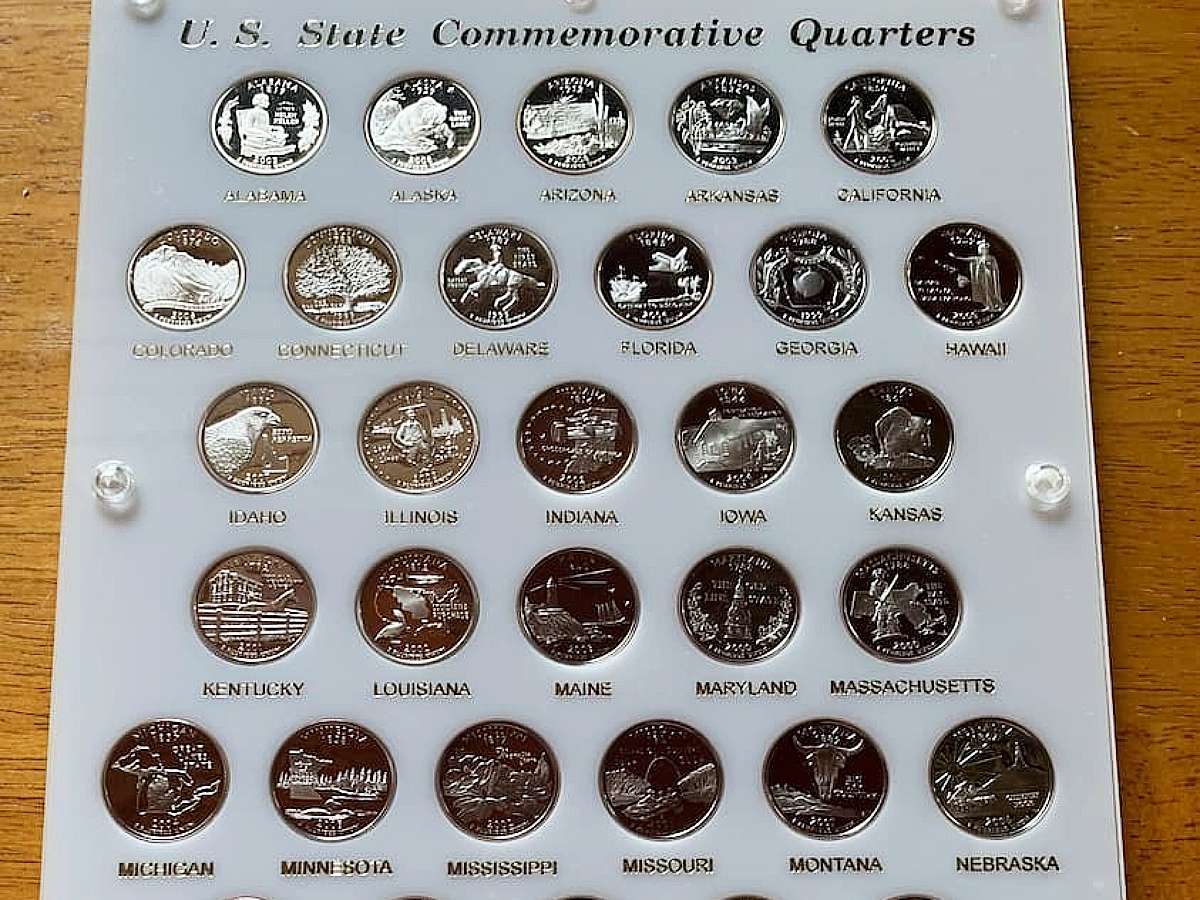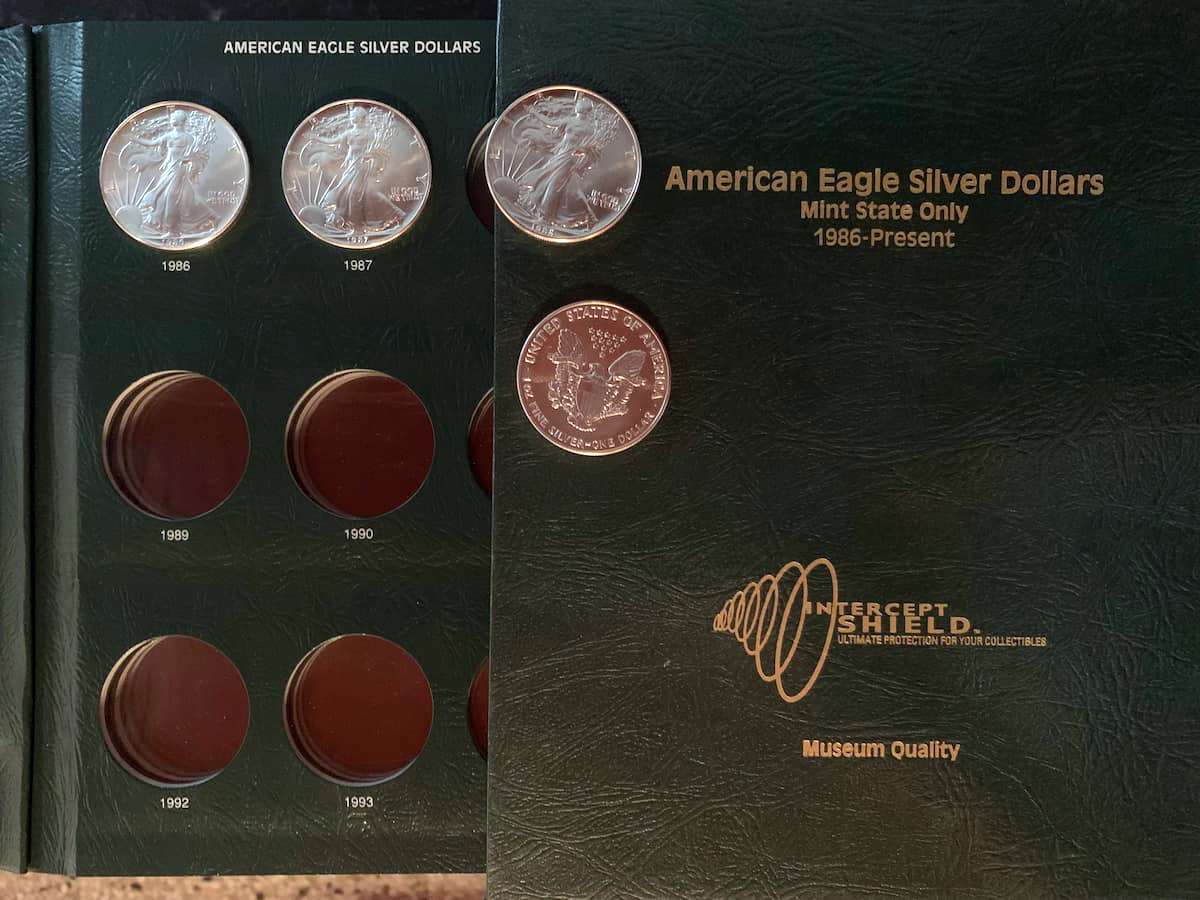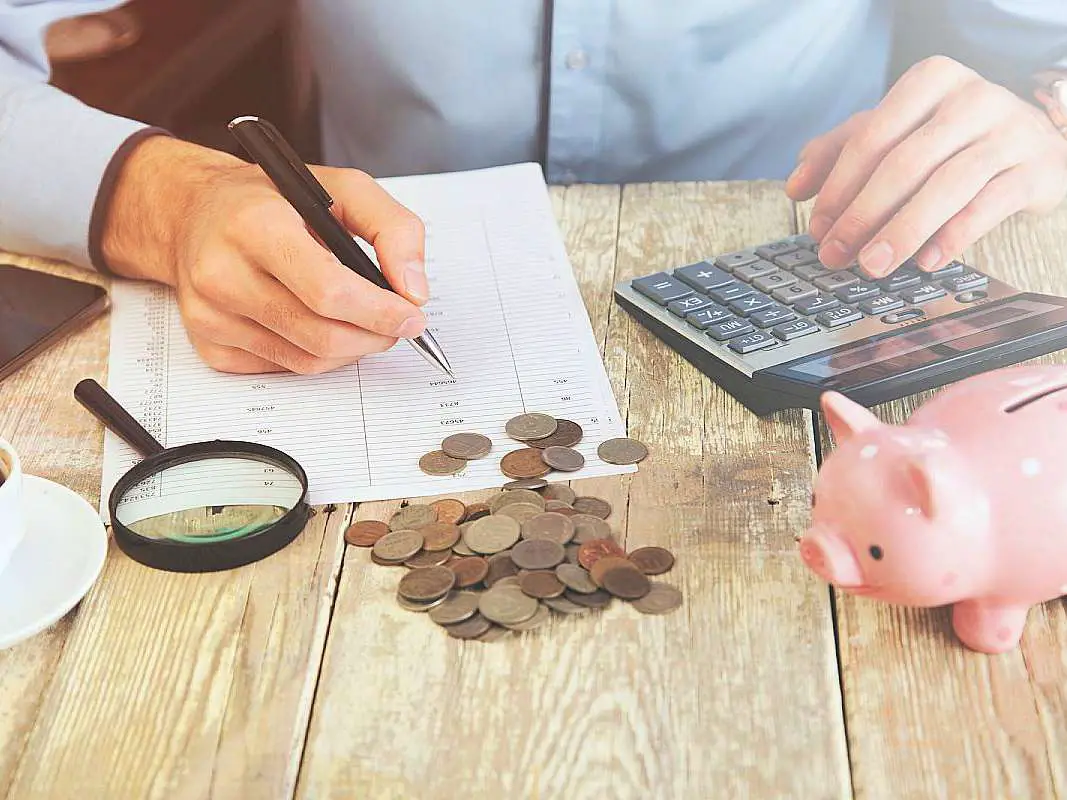Thousands of collectors have ruined their coins thanks to a very common chemical known as Polyvinylchloride, or PVC.
Many plastic items contain PVC — including many older coin holders. This is bad.
Can you see the light green film on this coin?…

That green film is a sign of PVC damage.
The Dangers Of PVC In Some Plastics
You see, PVC might be great for making all kinds of things – like the pipes in your home, or your windows and doors. It’s even a superior product for insulating electrical wiring, making clingy wrap film, and making the credit card you might’ve used for buying the coins in your coin collection.
But PVC is dangerous for coins because it’s notorious for chemically reacting with their metal.
The damage usually shows up as a greenish, slimy goo on the coin’s surface. It can also leave pits and porosity underneath.
This type of damage is irreversible. And it can spread from coin to coin in your collection like a virus – each affected coin can contaminate any others that it encounters. (It should also be noted that PVC is one of the most harmful types of plastic for the environment, in general.)
Now bear in mind here, I’m not writing this as a chemist or scientist. I’m writing this as a coin collector who, since 1992, has done a good bit of research on the matter of PVC coin holders. I’ve even used them myself. But as soon as I learned about the dangers of PVC on coins, I sought out safer holders for the coins in my collection.
My goal isn’t to slam any particular coin supply companies or tell you to spend a ton of money on new coin supplies. But I hope this article helps educate you more about the benefits of buying non-PVC coin holders and how to avoid coin supplies that could harm your coins.
How Can Coins Be Affected By PVC?
Fair question. I mean, coins seem pretty indestructible, right?
It’s sort of the same reasoning I hear from people who think I’m overreacting when I tell them not to clean coins – they may believe that because a coin is made from metal a little soap, toothpaste, or ketchup won’t do any harm.
Yet, many metals are extremely reactive to the chemicals contained in a variety of household products. And that’s one reason why I advise people to never clean their coins. It’s also why PVC is a big no-no for storing coins.
And the big problem here is that PVC was a huge component in so many of the coin displays, coin flips, and even coin albums way back when. It was commonly used in the 1960s, ‘70s, and into the ‘80s. I’ve even seen some coin supplies of more recent vintage that contain PVC.
The problem is that you have to be extra careful when buying coin supplies that don’t contain PVC… Many products claim they don’t have any PVC, but when you go to touch them or feel them, you can tell they likely contain the nefarious plastic.
How To Tell If A Coin Holder Has PVC In It
Unless you’re chemically testing all of your coin flips, coin albums, and coin displays, you can’t know 100% for sure that your coin supplies have PVC in them. And you need to be especially careful when buying old coin holders. It’s sort of like buying an old house and not knowing if it has lead paint or asbestos-laden acoustical tile in it. But if a house is of a certain age – usually built prior to around 1980 – you’re better off assuming it may have lead paint and asbestos in it.
Unfortunately, there’s no such cutoff date for PVC in coin supplies. Even though it’s pretty widely known that the plastic is harmful to coins and many other kinds of collectibles, some hobby supply companies still use PVC. Why? Because it’s durable, it’s softer and more flexible than other types of plastics, and it’s versatile. Oh, and it’s cheap!
I started buying coin supplies in the early 1990s, when many coin flips, coin displays, and other supplies still contained PVC. Not only did some of the new ones harbor PVC, but also so did a ton of the used coin displays that were for sale at coin shops and coin shows. I even bought – new – some coin albums that had plastic pages and sliding inserts. They later became infamous for using PVC in these albums. I won’t name the company, but they were well known for their brown leatherette-style album covers.
When I’m buying coin supplies I almost exclusively buy new material. I’m also choosey about what brands I purchase from. And I can tell you this: I look for the tell-tale signs of PVC in my coin holders!
Some of the ways you can spot PVC in your coin holders include:
- Bend the flips – If the coin flip is really soft and easy to bend without cracking, it’s likely made from PVC. Non-PVC flips will crack or break if you bend them too much.
- Feel the flips, display boards, or album pages – If they feel greasy or slimy, they probably contain PVC.
- Look at the color – Older PVC products, and certainly aging PVC coin flips and coin displays, often have a yellowish or cloudy appearance.

NOTE: Be careful when testing for PVC in coin holders using methods that involve heat or flames. Some forums recommend testing coin flips using copper wire and heat. But I won’t go into the details or explain what to look for. I’m not going to tell you how to burn your house down or inhale caustic fumes with one or two easy missteps.
Suffice it to say, the steps I describe above are safe and useful for detecting PVC in your coin supplies.
What To Look For When Buying Non-PVC Coin Holders
It’s not just as simple as choosing coin supplies that declare “PVC free” on their labeling — let me tell you. This isn’t cynicism talking. This is experience. Some coin supplies with packaging that claim they’re PVC free seem suspect at best.
Same goes with the so-called “acid-free” coin flips and coin holders. Pretty much all plastics contain (or can emit) acids.
Oh, and before I reveal my picks for safe non-PVC coin holders, let me say that I have absolutely no financial or personal stakes of any kind with these companies or products.
SAFLIP Non-PVC Coin Flips
If you want PVC-free coin flips, I recommend SAFLIP coin holders.

These coin flips contain two pockets opposite each other on a piece of plastic that folds in half to the dimensions of 2 inches by 2 inches.
They’re made from polyethylene terephthalate (PET) and contain no PVC and no oils.
They’re inert and won’t harm your coins. They’re also flexible and can be sealed with heat.
I’ve used SAFLIP coin flips for years. And I know a lot of other coin collectors and coin dealers who use them, too.
Capital Plastics Non-PVC Coin Holders & Displays
Want to display your coin collection in high-quality holders?
Look no further than my longtime-favorite coin holders made by Capital Plastics.
Their deluxe coin holders are museum quality and made from Lucite.

How do I know? I’ve arranged some of my coins in Capital Plastics holders since the 1990s, and the coins in those sets still look fantastic!
Dansco & Intercept Shield Non-PVC Coin Albums
If you want to store and organize your coins in coin albums, then you should check out Dansco albums and / or Intercept Shield albums.
Both are high-quality albums that don’t contain any PVC chemicals and can safely hold your coins for years and years.

The photo immediately above is of one of my Intercept Shield albums.
You can see the Lincoln penny set in my Dansco album in this video:
Is There A “Perfect” Coin Storage Solution?
I thought you’d ask this question, and the reality is there isn’t really a single-best type of coin holder. Each has its advantages and disadvantages.
Why, even PVC coin flips are good for one thing: they’re not as brittle as SAFLIP and other non-PVC coin flips.
Some would tell you that a PVC flip may actually be safe for short-term storage OR for shipping your coins to third-party graders and the like – because the non-PVC ones might crack while being shipped.
My advice? I would stay away from the PVC coin flips and other PVC coin storage holders altogether.
What about using coin display holders and coin albums? Yeah, neither of those is airtight.
Some folks will find non-PVC coin holders expensive — so they’ll opt for the more affordable coin folders, which are made from cardboard and contain glues and other chemicals. These chemicals could alter the appearance of your coins, and the coins could fall out of the cardboard panels. But I like them for short-term coin storage or for displaying low-value coin sets.
Ultimately, you’ll need to find the best compromise that meets the needs of your coin-storage goals, the safety of your coins, and your budget.
But the bottom line is… Whatever you do, stay away from PVC coin holders!




